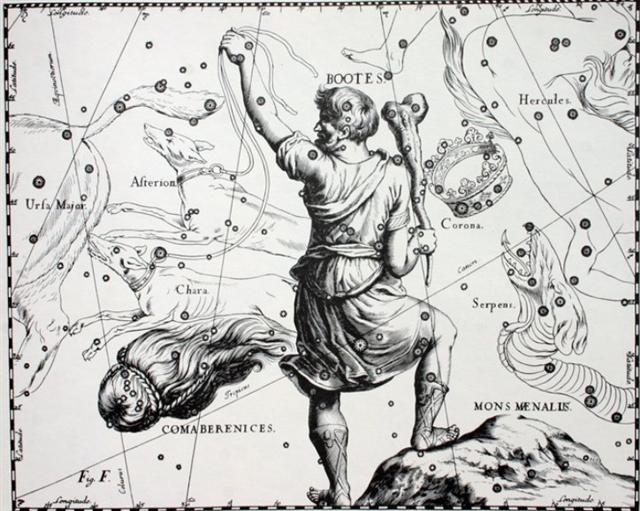The brightest of the 10 Tahitian star pillars was Arcturus (-0.05) and this 'pillar to stand by' was located precisely (*215.4 - *41.4) = 6 * 29 right ascension days after Bharani.
It seems reasonable to assume Metoro saw the place of heliacal Hamal (when Alkes would have been at the Full Moon) as the last day of the ancient old year, for this could have motivated him to tell Bishop Jaussen about sounding drums and a sky which was moving. Why was the sky moving? Perhaps because there was a jump ahead with 348 / 2 = 174 right ascension days. 6 * 29 = 348 / 2 On the C tablet there were 348 (= 12 * 29) glyphs on side b and 348 + 16 = 364. On the front side was the Sun and on the back side the stars were shining. From the positions of the stars in the night the dates could be deduced. ... Thus, presumably the drums were sounding at the northern spring equinox - viz. according to the A text in what could be deduced as day 1 after 0h in Roman times ('March 22) and according to the C text 3 days later = the Julian equinox ...
... The Symplegades ... or Clashing Rocks, also known as the Cyanean Rocks, were, according to Greek mythology, a pair of rocks at the Bosphorus that clashed together randomly. They were defeated by Jason and the Argonauts, who would have been lost and killed by the rocks except for Phineus' advice. Jason let a dove fly between the rocks; it lost only its tail feathers. The Argonauts rowed mightily to get through and lost only part of the stern ornament. After that, the Symplegades stopped moving permanently ... ... The Argonauts, with the Golden Fleece on board, had to pass the Symplegades, the clashing rocks. Once a ship with its crew came through unharmed - so the 'blessed ones' (makaroi) had decided long ago - the Symplegades would stay fixed, and be clashing rocks no longer. After that 'accepting the novel laws of the fixed earth', they should 'offer an easy passage to all ships, once thay had learnt defeat'. This is only one station on the long 'opening travel' of the Argonauts transporting the Golden Fleece (of a ram), undertaken in all probability to introduce the Age of Aries, but it demonstrates best the relevant point, namely, 'the novel laws' ...
|
||||||||||||||||||||||||||||||||||||||||||||||||||||||||||||||||||||||||||||||||||||||||||||||||||||||||||||||||








